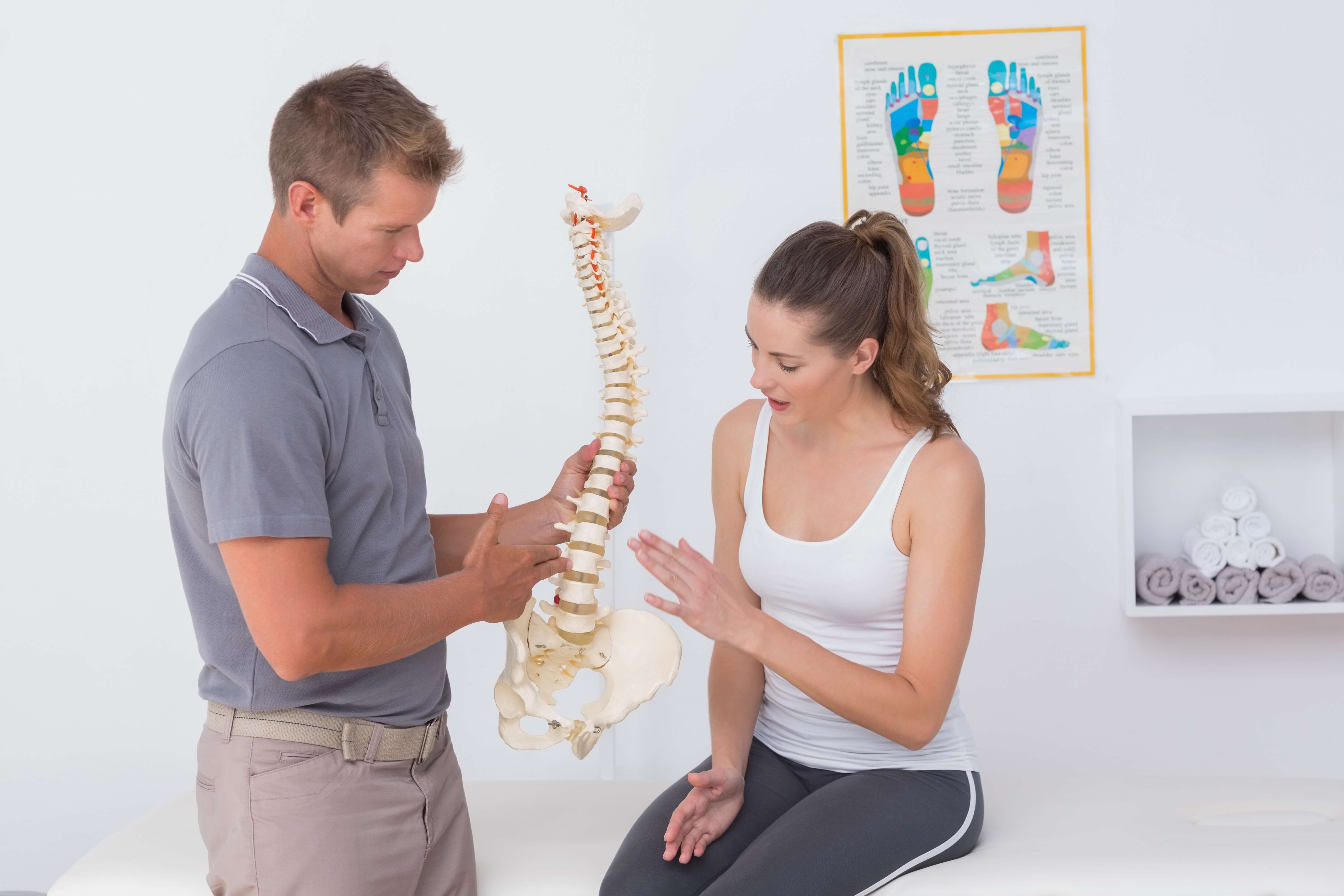Your spine is a complex part of the body. It is comprised of 24 bones, and 5 of them are located in the lower back. It is also comprised of numerous nerves and intervertebral discs. Sometimes, the jelly-like nucleus of these discs can “herniate,” or protrude, through the cell wall, if it is not strong enough. If this pressure continues, it could push through the outer ring and begin to bulge. Herniated discs occur along the spine, and they are most often found in the lower back.
Generally, lower back pain is the first symptom of this a herniated disc. Other symptoms may include numbness or weakness in the legs, shooting pain down the back of one leg, or loss of bladder control. Back pain can range from moderate to severe. If you are experiencing back pain and you think it may be the result of a herniated disc, call our office today to see how physical therapy can help you get back to a pain-free life.
What causes herniated discs?
Herniated discs are typically associated with aging, as the spine begins to wear down and become more brittle. This is known as “disc degeneration.” The discs in the spine contain a high water content when we’re young, but as we age that water content gradually decreases. This causes the discs to shrink. Therefore, the older we get, the more prone we become to disc degeneration. Other risk factors that can make you more prone to herniated discs include:
- Being male.
- Being overweight.
- Being between the ages of 20-50.
- Engaging in improper lifting techniques.
- Driving frequently.
- Engaging in a sedentary lifestyle.
How do I know if I have a herniated disc?
If you believe you may be suffering from a herniated disc, it is important to consult your primary care physician first. Your doctor will perform a physical exam to assess muscle strength and sensation to see if your disc is herniated, and he or she may also conduct a neurological exam.
If your doctor believes your disc is herniated, a magnetic resonance imaging (MRI) scan may be done to confirm the diagnosis. From this scan, your doctor will be able to clearly see if there is a herniated disc in the lower back region. If the disc is putting pressure on the spine, it can be detected. Your doctor will then provide you with a treatment plan, and will likely recommend physical therapy for pain relief.
How physical therapy can help:
After going through an evaluation with your physical therapist, he or she will begin your treatment with passive physical therapy. Passive physical treatments include deep tissue massage, hot and cold therapy, hydrotherapy, transcutaneous electrical nerve stimulation (TENS) and traction.
Deep tissue massage utilizes pressure to relieve muscle tension and spasms. Hot therapy may be used to increase blood flow to the target area to accelerate healing. Cold therapy helps reduce inflammation. Hydrotherapy relaxes muscles and brings pain relief. The TENS machine uses an electrical current that triggers the release of endorphins, which are the body’s natural painkillers. Traction may be implemented to reduce pressure on the spine.
After your passive physical therapy is complete, your physical therapist will create an active treatment plan for you. This may include core exercises to strengthen your back, stretching and flexibility exercises to increase range of motion, and muscle strengthening exercises. Your physical therapist will also give you self-care advice that you can implement on your own, in order to maintain a healthy and active lifestyle.
Physical therapy has been proven to be effective for disc herniation. It is a noninvasive alternative to surgery and a natural way to relieve pain without the need for harmful drugs. If you are suffering from back pain or a disc herniation, give us a call at (269) 769-6108 or click here to schedule a consultation today. Our experienced and certified physical therapists would be happy to help you get you started on your process toward long-lasting pain relief.
Tags: Massage, Dry needling, Physical Therapy, Physical Therapist, Back Pain Relief, Headace Relief, Diet, Exercise, Cervical traction, Motivation, Health, Arthritis pain relief, Herniated Disc







